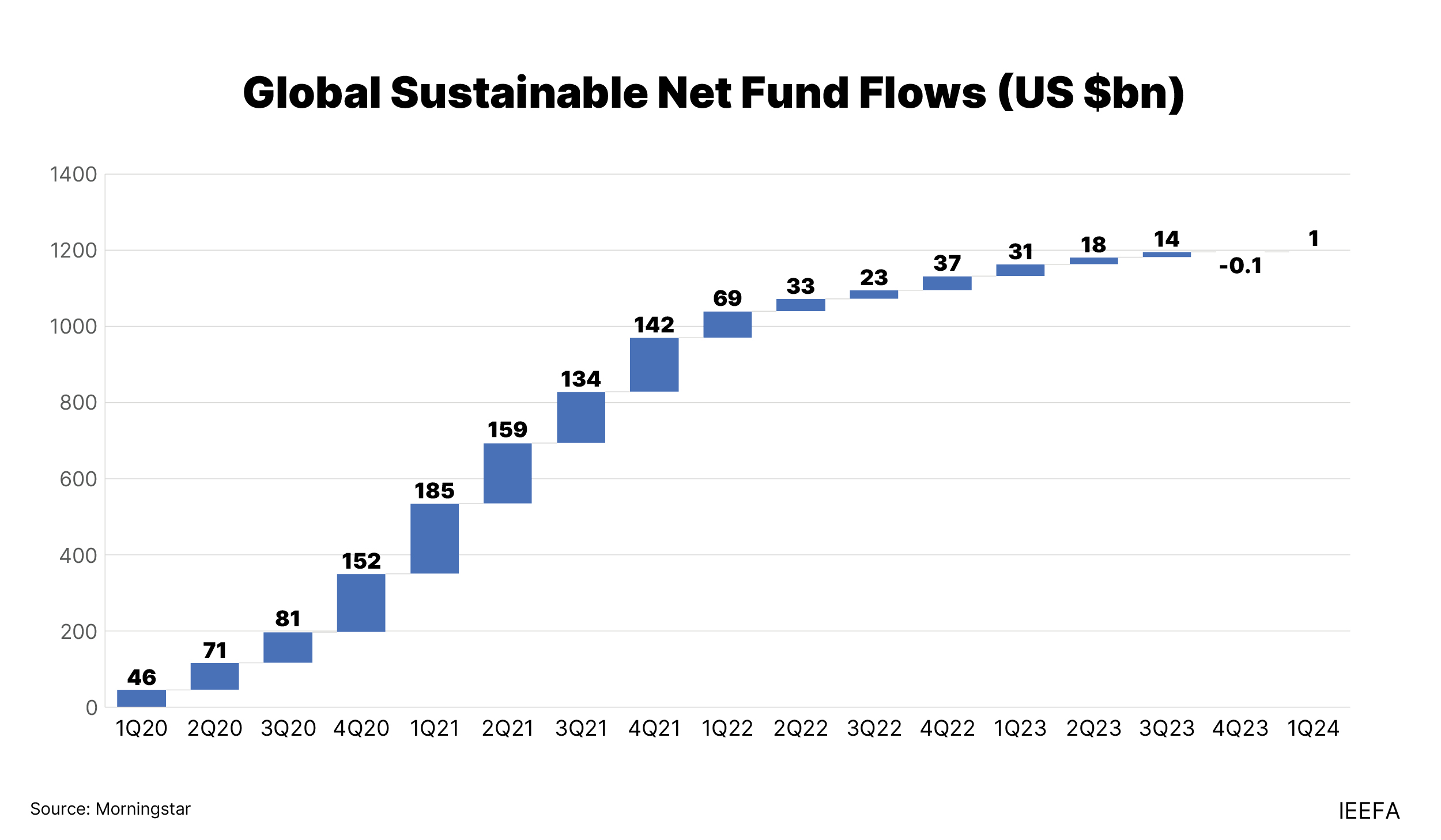ESG funds continue to thrive and outperform traditional funds across equity and fixed-income asset classes

Large asset owners’ focus on sustainability and assessment of climate risks, coupled with increasing regulatory support, highlights the consistently growing relevance of ESG investing
Environmental, social, and governance (ESG) investing grew rapidly in both investor and public consciousness between 2017 and 2022, but has recently faced backlash from certain quarters. Despite this backlash, ESG funds continue to grow their assets. According to a new report by the Institute for Energy Economics and Financial Analysis (IEEFA), these investments, despite facing perception challenges and regional differences, have outperformed traditional funds and exchange-traded funds (ETFs).

“Sustainable funds generated better returns than traditional funds in 2023, with a median return of 12.6% versus 8.6% for traditional funds. This outperformance was extended across both equity and fixed-income fund asset classes,” says Ramnath N Iyer, Sustainable Finance Lead, Asia, at IEEFA and author of the report.
The report analyzes the actual performance and returns of ESG-related funds and investments, the fund flows into and out of these funds, and the regional differences and their implications. It also explores regulatory trends and oversight of capital markets, as well as the perspectives and intentions of large investors and asset owners.
The findings indicate that ESG continues to grow and remain relevant. The performance of ESG funds and ETFs has matched or surpassed traditional funds/ETFs over most time periods, and regulators continue to focus on climate change risks, and on improving standards and disclosures to assess and mitigate these risks.

Regional differences in ESG investments
While a global view of the flows into sustainable funds may suggest a slowdown, IEEFA’s analysis of the regions illustrates that this is far from signaling the sector’s impending demise. Despite the reduced flow of funds into the sustainable asset class in recent months, there are clear regional differences between the United States (U.S.) and Europe. Compared to an outflow of US$8.8 billion (bn) from the U.S., Europe saw an inflow of almost US$11bn into this asset class, more than double that of the previous quarter.
“Europe has been the standard bearer for ESG since the beginning. With 84% of sustainable assets under management, the region is home to some of the largest and most significant ESG investors,” says Iyer.
Asia also saw an inflow of US$622 million (mn) in the first quarter of 2024, after an outflow in the previous quarter. In 2023, Southeast Asia attracted US$324mn, an increase of 11% compared to US$291mn of inflows in 2022. China, Taiwan, and Singapore led among the ex-Japan markets in Asia last year with US$4.8bn of new inflows.
A growing focus for regulators and asset owners
The report finds that regulators, particularly in Europe and many Asian countries, are increasing their focus on climate risks and aiming for further transparency coupled with more robust reporting on climate and ESG matters.
The European Union approved the Corporate Sustainability Reporting Directive, which requires businesses to report their environmental and social impacts, as well as how their ESG actions affect their operations.
Based on the International Sustainability Standards Board (ISSB) framework, Singapore announced mandatory reporting of climate metrics for listed corporates with a phased implementation from 2025 to 2026. Regulators in South Korea will also require corporates to make climate disclosures using an ISSB-based framework.
Apart from ISSB-based consultations in Malaysia, Bank Negara, the country’s central bank, separately announced enhanced methods for banks to conduct climate stress tests on their portfolios. Another central bank, the Reserve Bank of India, also proposed mandatory disclosure of climate-related risks from banks.
By 2026, apart from South Korea and India’s mandatory disclosures coming into effect, the stock exchanges in China will also require compulsory ESG reporting by listed corporates.
“The increasing regulatory support and enhanced regulatory developments signal the mainstream adoption of climate, sustainability, and ESG policies. It remains important to evaluate, gauge, and mitigate climate change risks when making investment decisions,” says Iyer, “Even the less stringent U.S. Securities and Exchange Commission’s climate disclosure requirements can be viewed as a first step.”
Large asset owners, such as sovereign wealth funds and pension funds, are increasingly integrating ESG and climate considerations into their investment processes and decision-making. They use the Paris Agreement to identify sustainability outcomes, prioritize collaborative engagements, provide regular reporting on climate and ESG issues, and implement and evaluate sustainable investments.
“Asset owners are integrating ESG more, not less,” says Iyer, “Given their need for long-term performance, large asset owners understand the importance of incorporating sustainability outcomes into investment analyses and are likely to continue doing so.”
According to Iyer, while U.S. political developments may have dampened sentiment toward ESG funds, this has not affected the fund performance globally, which continued to surpass traditional ones in 2023.
Regulatory demands for greater climate and sustainability disclosures are also increasing and impacting global markets.
“Any fund house that intends to be a global player must adapt to this shift, including those in the U.S., despite any internal debates,” adds Iyer.
Read the report: ESG Investing: Steady growth amidst adversity
Author contact: Ramnath Iyer ([email protected])
Media contact: Josielyn Manuel ([email protected])
About IEEFA:
The Institute for Energy Economics and Financial Analysis (IEEFA) examines issues related to energy markets, trends and policies. The Institute’s mission is to accelerate the transition to a diverse, sustainable and profitable energy economy. (www.ieefa.org)













